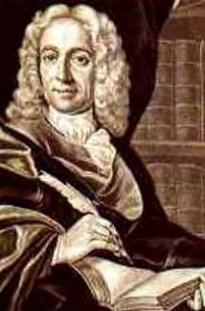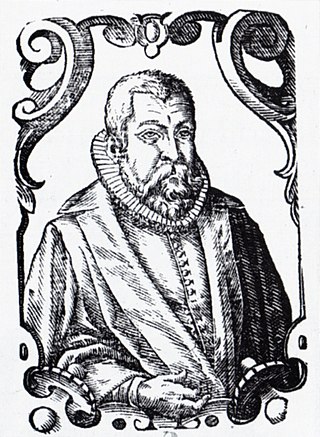In linguistics, the grammar of a natural language is its set of structural rules on speakers' or writers' usage and creation of clauses, phrases, and words. The term can also refer to the study of such rules, a subject that includes phonology, morphology, and syntax, together with phonetics, semantics, and pragmatics. There are, broadly speaking, two different ways to study grammar: traditional grammar and theoretical grammar.
Vernacular is the ordinary, informal, spoken form of language, particularly when perceived as being of lower social status in contrast to standard language, which is more codified, institutional, literary, or formal. More narrowly, a particular variety of a language that meets the lower-status perception, and sometimes even carries social stigma, is also called a vernacular, vernacular dialect, nonstandard dialect, etc. and is typically its speakers' native variety. Despite any such stigma, modern linguistics regards all nonstandard dialects as grammatically full-fledged varieties of a language.
Bahir or Sefer HaBahir is an anonymous mystical work, attributed to a 1st-century rabbinic sage Nehunya ben HaKanah because it begins with the words, "R. Nehunya ben HaKanah said". It is also known as Midrash of Rabbi Nehunya ben HaKanahמִדְרָשׁ רַבִּי נְחוּנְיָא בֶּן הַקָּנָה.
Ivan Petrovych Uzhevych was a Ruthenian grammarian.

Thomas van Erpe, also known as Thomas Erpenius, Dutch Orientalist, was born at Gorinchem, in Holland. He was the first European to publish an accurate book of Arabic grammar.

Matthias Bel or Matthias Bél was a Lutheran pastor and polymath from the Kingdom of Hungary. Bel was active in the fields of pedagogy, philosophy, philology, history, and theoretical theology; he was the founder of Hungarian geographic science and a pioneer of descriptive ethnography and economy. A leading figure in pietism. He is also known as the Great Ornament of Hungary.

Samuil Micu Klein was a Romanian Greek-Catholic theologian, historian, philologist and philosopher, a member of the Enlightenment-era movement of Transylvanian School. He is the author of Elementa linguae daco-romanae sive valachicae, a book which is the reference point for the start of Modern Romanian language period.

Gramática de la lengua castellana is a book written by Antonio de Nebrija and published in 1492. It was the first work dedicated to the Spanish language and its rules, and the first grammar of a modern European language to be published. When it was presented to Isabella of Castile at Salamanca in the year of its publication, the queen questioned what the merit of such a work might be; Fray Hernando de Talavera, bishop of Avila, answered for the author Nebrija in a letter addressed to the monarch:
After Your Highness has subjected barbarous peoples and nations of varied tongues, with conquest will come the need for them to accept the laws that the conqueror imposes on the conquered, and among them our language; with this work of mine, they will be able to learn it, as we now learn Latin from the Latin Grammar.
The history of English grammars begins late in the sixteenth century with the Pamphlet for Grammar by William Bullokar. In the early works, the structure and rules of English grammar were based on those of Latin. A more modern approach, incorporating phonology, was introduced in the nineteenth century.

Floris Italicae linguae libri novem is a book written by Florentine scholar and cleric Agnolo Monosini (1568–1626), who played a key role in the development of the Italian language two hundred years prior to the Risorgimento. The book was published in 1604, as a collection of many vernacular Italian proverbs and idioms, comparing and contrasting them with Greek and Latin.

Otto Walper was a German theologian and philosopher.

Franciscus à Mesgnien Meninski (1623–1698) was the author of a multi-volume Turkish-to-Latin dictionary and grammar of the Turkish language, first published in 1680, which was ground-breaking in its comprehensiveness at the time, and for historians and linguists today it is a valuable reference for the Turkish language of the early modern period.

Julius Heinrich Petermann was a German Orientalist.

Peder Pedersen Syv or in Latin Petrus Petri Septimius was a Danish philologist, folklorist, and priest, known for his collections of Danish proverbs and folksongs and his contributions to the development of Danish as a written language.

The Simple Words of Catechism by Martynas Mažvydas is the first printed book in the Lithuanian language. It was printed on 8 January 1547 by Hans Weinreich in Königsberg. The 79-page book followed the teachings of Martin Luther but reflects both religious and secular needs. The book included the first Lithuanian-language poem, primer with alphabet, basic catechism, and 11 religious hymns with sheet music. The book was written in the Samogitian dialect and printed in Gothic (schwabacher) font; Latin dedication and preface are printed in Latin font (antiqua).

Universitas lingvarum Litvaniæ is the oldest surviving grammar of the Lithuanian language published in the territory of the Grand Duchy of Lithuania. It was written in Latin and was published in the Lithuanian capital Vilnius by the Vilnius University Press in 1737. Its author is unknown, however the grammar of the Lithuanian language shows that the author may have originated from the districts of Dotnuva, Kėdainiai, Surviliškis, Šėta. It was written independently as there is no influence of the grammar of the Lithuanian language of Lithuania Minor.
Ignatius of Jesus was an Italian Roman Catholic friar of the Order of the Discalced Carmelites who served as a missionary in Persia, Basra, and Lebanon for 35 years. He is best known for writing the first Western scholarly work on Mandaeism, Narratio originis, rituum, & errorum christianorum Sancti Ioannis (1652).

Grammatica Litvanica is the first prescriptive printed grammar of the Lithuanian language which was written by Daniel Klein in Latin and published in 1653 in Königsberg, Duchy of Prussia.
Johannes Clajus (1535–1592) was a Saxon pastor and schoolmaster. He wrote the first grammar of the German language, Grammatica Germanicae lingua, published in 1578.
A grammar book is a book or treatise describing the grammar of one or more languages. Such books are themselves frequently referred to as grammars.












